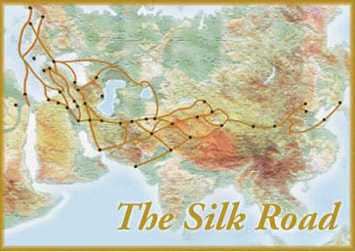Interaction and Interdependence of Nomadic and Sedentary Societies- Xinru Liu
When the term “nomad” is mentioned, the image that surfaces in my imagination is that of a barbaric, uncivilized being. The traditional vision of a nomad relates to my thought because from an early age we are taught to associate the word nomad to negative, inhumanly thoughts. Backing up this image of the nomad, television shows, movies and cartoons usually show a nomad character as a satirical and comical character. However, Xinru Liu attempts to shatter this tainted image of the nomad and brings about new positive characteristics. As an intellectual historian, Liu’s angle in this article is to show that those who were deemed nomadic actually had a significant influence on agricultural societies. Liu also attempts to prove that shockingly, there were more similarities than differences shared between these two groups of people.
Nomads were very helpful to agricultural societies in terms of their accessibilities. What startled me was the fact that nomads had better means of transportation and trading. The nomads urged to exchange goods and ideas with other peoples. Through interaction with agricultural neighbours, it is necessary to state that nomads played a significant role in the successes of the agricultural people. Liu states that both Indian and Chinese culture was established through the interactions of the nomads and the agricultural societies. Liu demonstrates her argument in the history of the Yuezhi- Kushan people whom first began as a tribe which later became the rulers of the agricultural trading empire. Liu states that the Kushan’s sculptures that were left behind after their regime did not differ in design, style or look from those of the Indian’s. The artworks that have been uncovered do not show many differences among the two categories of people. Using artwork as an example, she beings to diminish the fixed categories of nomad and sedentary. The nomads contributed greatly to the sedentary peoples. During the era of the Chariot Revolution, agricultural societies in need of horses obtained many from the nomads. So far we learned that nomads were than capable of interactions, suppliers of horses and trade, more accessible to transportation and beneficial to the needs of the sedentary people. Slowly the barbaric image starts to dissolve.
Liu’s final attempt to deconstruct the unpleasant position of the nomadic people concludes when she presents the idea that Yuezhi-Kushan culture was brought upon Chinese culture as a gradual penetration and not an invasion. This shakes the sour image of the nomad because it gives the impression that ancient peoples accepted nomads, when modern day people tend to scrutinize them. The fact that nomads had the ability to transform from a tribal group into ruling elite disregards every negative stereotype surrounding their people. In order to rule they must have been a group of determined, hard working, intelligent beings. Liu desired to show the nomad in a different realm of thinking. Through her article, Liu gave the nomad a history, a purpose and a freedom from corrupt views.
